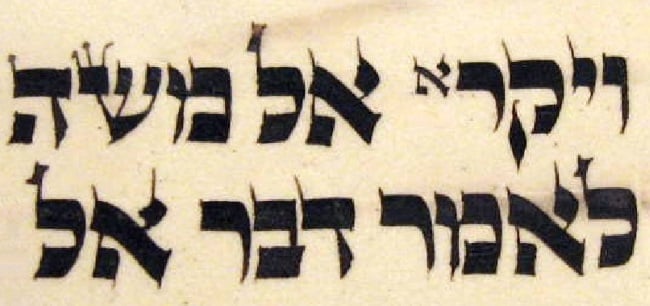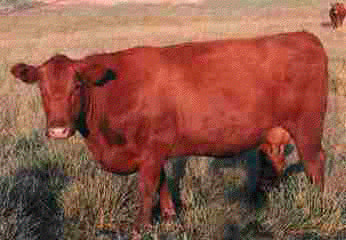 Rabbi David Etengoff Dedicated to the sacred memories of my mother, Miriam Tovah bat Aharon HaKohane, father-in-law, Levi ben Yitzhak, sister, Shulamit bat Menachem, sister-in-law, Ruchama Rivka Sondra bat Yechiel, Chana bat Shmuel, Yehonatan Binyamin ben Mordechai Meir Halevi, Tikvah bat Rivka Perel, Gittel Malka bat Moshe, Alexander Leib ben Benyamin Yosef, the Kedoshim of Har Nof, Pittsburgh, and Jersey City, the refuah shlaimah of Mordechai HaLevi ben Miriam Tovah, and the health and safety of our brothers and sisters in Israel and around the world. The name, “Shabbat HaGadol,” has captured the imagination of Torah exegetes since time immemorial. The second Bobover Rebbe, HaRav Ben-Zion Halberstam zatzal (1874-1941), a member of this illustrious group, begins his analysis of this term by citing Tosafot’s explanation in Talmud Bavli, Shabbat 87b s.v. v’oto: The reason why we call the Shabbat before Passover, “Shabbat HaGadol,” is because of the great miracle (nes gadol) that took place on that day in accordance with the words of the Midrash: When the Jewish people took their paschal lambs on that very Shabbat, all of the first born sons of the nations of the world gathered together before the Jewish people and asked them: “Why are you doing this?” The Jewish people responded: “This is a Passover offering to Hashem Who will go forth and kill the first born of the Egyptians.” They [the first born of the Egyptians] went before their fathers and Pharaoh to ask them to send forth the Jewish people and they refused. As a result, the first born of the Egyptians started a war and killed many of them. Thus, the text states: “To Him Who smote the Egyptians with [by the hands of] their firstborn.” (Sefer Tehillim 136:10, this and all Tanach translations, The Judaica Press Complete Tanach, brackets my own) Rav Halberstam now presents a classic question: “If this is the case [that we are commemorating this great miracle on this day], then this Shabbat should be called “Shabbat Nes HaGadol,” as such, why is it called “Shabbat HaGadol?” (Kedushat Tzion, Pesach, Shabbat HaGadol, new edition, page 57, translation and brackets my own). He answers this question with a quotation from Mechilta d’Rabbi Yishmael: “And I will be glorified through Pharaoh…” (Sefer Shemot 14:4) The text is telling us that when the Omnipresent One punishes the [evil] nations of the world, His Name becomes greater (shemo mitgadel) throughout the world. As it is said: “And I will place a sign upon them, and I will send from them refugees to the nations, Tarshish, Pul, and Lud, who draw the bow, to Tubal and Javan, the distant islands, who did not hear of My fame and did not see My glory, and they shall recount My glory among the nations.” (Sefer Yeshayahu 66:19) …” (Parashat Beshalach, Mesechta d’Vahayah, Parasha 1, translation and brackets my own) I believe Rav Halberstam is teaching us a powerful chidush (novel idea) regarding the name Shabbat HaGadol: Instead of translating it at face value as “the Great Shabbat,” we need to translate it as “the Shabbat of the Great One,” namely the special Shabbat of the Holy One blessed be He. As Rav Halberstam so beautifully explained: “According to this [that is, the Mechilta], it is completely proper to call this Shabbat, “Shabbat HaGadol,” since at that time, Hashem rendered judgment against the evil ones and thereby magnified [and sanctified] His Name, may it be blessed, in the Universe.” Truly, then, this Shabbat is “the Shabbat of the Great One.” Shabbat Shalom and Chag Kasher v’Sameach Past drashot may be found at my blog-website: http://reparashathashavuah.org. Please contact me at [email protected] to be added to my weekly email list. *** My audio shiurim on the topics of Tefilah and Tanach may be found at: http://tinyurl.com/8hsdpyd *** I have posted 164 of Rabbi Soloveitchik’s English language audio shiurim (MP3 format) spanning the years 1958-1984. Please click on the highlighted link: The Rav
0 Comments
 Rabbi David Etengoff Dedicated to the sacred memories of my mother, Miriam Tovah bat Aharon HaKohane, father-in-law, Levi ben Yitzhak, sister, Shulamit bat Menachem, sister-in-law, Ruchama Rivka Sondra bat Yechiel, Chana bat Shmuel, Yehonatan Binyamin ben Mordechai Meir Halevi, Tikvah bat Rivka Perel, Gittel Malka bat Moshe, Alexander Leib ben Benyamin Yosef, the Kedoshim of Har Nof, Pittsburgh, and Jersey City, the refuah shlaimah of Mordechai HaLevi ben Miriam Tovah, and the health and safety of our brothers and sisters in Israel and around the world. Why is “vayikra,” the first word of our parasha, and the namesake of Sefer Vayikra, written with a diminutive aleph as its final letter? In his commentary on the Torah entitled, Ba’al HaTurim, Rabbeinu Ya'akov ben Asher zatzal (1270-1340) provides an intriguing explanation: Moshe was [simultaneously] great and humble. Therefore, he did not want to write “vayikra” (and G-d called); rather, he desired to write “vayikar” (and G-d happened to appear), which is an expression of a purely accidental meeting. By using vayikar, it would be as if Hashem spoke to him in a trance or in a dream, as the Torah states regarding Bilam. [Hashem, however, ruled against this view] and explicitly commanded Moshe to write the aleph [in order to represent his true eminence to the world.] Moshe, however, responded to Hashem—based upon his thoroughgoing humility— and told Him that he would only consent to write a miniature aleph that would be smaller than any other aleph in the Torah; and so, he wrote it in this manner. (Translation and brackets my own) According to Rabbeinu Yaakov’s interpretation, there was palpable tension between Hashem and Moshe, as Hashem perceived Moshe in an entirely different manner than Moshe viewed himself. In the Almighty’s judgment, Moshe was truly great and ever His faithful servant, for we know that with Moshe alone did He: “… speak mouth to mouth; in a [direct] vision and not in riddles.” Moreover, only Moshe, of all the prophets, was able to see marot (visions) of Hashem. (Sefer Bamidbar 12:8, this and all Tanach translations, The Judaica Press Complete Tanach) Clearly, Hashem sought to publicize Moshe’s unique nature by writing vayikra in its standard manner as the first word of our parasha. Moshe’s unparalleled anavah (humility), however, was at odds with this, and he therefore wrote “a miniature aleph that would be smaller than any other aleph in the Torah.” The Chasidic rebbe, Rav Simcha Bunim Bonhardt of Peshischa zatzal (1765-1827), is cited as having said a beautiful mashal (parable) that illustrates the depth of Moshe’s anavah and advances our understanding of the miniature aleph: Vayikra is written with a tiny aleph. The reason for this may be explained by the following mashal: There was a valiant man whom the king elevated to higher and higher levels [of power and authority] until he was raised above all his other officers. On one occasion, the king sought to ascertain if he [the intrepid individual] maintained the same level of awe toward him as he had in earlier times. He [the king], therefore called upon him to come to him. And this officer, being that he was truly humble in his self-perception, came before the king and presented himself in awe and fear in exactly the same manner as he had done in the past [prior to achieving his fame and glory]. The referent of this parable is Moshe, whom the Holy One blessed be He, raised up [above all others] and performed, through his agency, countless miracles and Matan Torah (the Giving of the Torah). Nonetheless, when He called to him [at the beginning of our parasha,] it was with a miniature aleph [at Moshe’s behest]. (Sefer Kol Simcha, Parashat Vayikra, translation and brackets my own) Anavah emerges as a constitutive element of Moshe’s very being. In contrast, most of us must work at developing this middah (ethical characteristic). We are fortunate that the Ramban (Nachmanides, 1194-1270) gives us ready guidance as to how to undertake this process: Speak gently at all times… with your heart focusing on Hashem… In all your actions, words, and thoughts, regard yourself as standing before Hashem, with His Schechinah [Divine Presence] above you, for His glory fills the whole world. Speak with fear and awe, as a servant standing before his master. Act with restraint in front of everyone. When someone calls you, don’t answer loudly, but gently and softly, as one who stands before his master. (Iggeret HaRamban, translation, with my emendations, http://www.pirchei.com/specials/ramban/ramban.htm, brackets my own) Two salient points emerge that guide us toward the attainment of anavah: Our encounters with others should embody respect and dignity, and we must focus upon Hashem, ever conscious that we stand before His Divine Presence. With the Almighty’s help, may our efforts to achieve these goals enable us to fulfill Moshe’s clarion call to the Jewish people: “And you shall do what is proper and good in the eyes of Hashem.” (Sefer Devarim 6:18). V’chane yihi ratzon. Shabbat Shalom Past drashot may be found at my blog-website: http://reparashathashavuah.org. Please contact me at [email protected] to be added to my weekly email list. *** My audio shiurim on the topics of Tefilah and Tanach may be found at: http://tinyurl.com/8hsdpyd *** I have posted 164 of Rabbi Soloveitchik’s English language audio shiurim (MP3 format) spanning the years 1958-1984. Please click on the highlighted link: The Rav  Rabbi David Etengoff Dedicated to the sacred memories of my mother, Miriam Tovah bat Aharon HaKohane, father-in-law, Levi ben Yitzhak, sister, Shulamit bat Menachem, sister-in-law, Ruchama Rivka Sondra bat Yechiel, Chana bat Shmuel, Yehonatan Binyamin ben Mordechai Meir Halevi, Tikvah bat Rivka Perel, Gittel Malka bat Moshe, Alexander Leib ben Benyamin Yosef, the Kedoshim of Har Nof, Pittsburgh, and Jersey City, the refuah shlaimah of Mordechai HaLevi ben Miriam Tovah, and the health and safety of our brothers and sisters in Israel and around the world. The mitzvah of Rosh Chodesh, the focus of this week’s additional Torah reading, has been an essential link between Hashem and our people since we were commanded in its observance prior to the Exodus from Egypt: “Hashem spoke to Moshe and to Aharon in the land of Egypt, saying, ‘This month (hachodesh hazeh) shall be to you the head of the months; to you it shall be the first of the months of the year.’” (Sefer Shemot 12:1-2, this and all Tanach and Rashi translations, The Judaica Press Complete Tanach, with my emendations) In his Commentary on the Torah, Rashi (1040-1105) explains the expression, “hachodesh hazeh,” as referring to Chodesh Nissan: “Concerning the month of Nissan, He [Hashem] said to him [Moshe], ‘This shall be [to you, Leipzig manuscript] the first [month] of the order of the number of the months, so Iyar shall be called the second [month], and Sivan the third [month].’” In short, the first month of the year is Chodesh Nissan, a reading that is strongly supported by the concluding words of the pasuk, “to you it shall be the first of the months of the year.” The Ramban (Nachmanides, 1194-1270), in his Drasha l’Rosh HaShanah, raises a strong objection to Rashi’s approach: “And if it [the first day of Tishrei, the seventh month from Chodesh Nissan,] is Rosh HaShanah, its month is incontrovertibly the first month of the year. For this is an unbreakable [logical] connection [that is, axiom,] that the first month of the year must also be Rosh HaShanah, as the year is, by definition, the combination of the months.” (Kitvei Ramban, vol. I, Rabbi Dr. Charles B. Chavel editor, pages 214-215, translations, and brackets, my own) How, then, does the Ramban understand our pasuk? His explanation is an exegetical tour de force: That which is said in the Torah regarding Nissan, “this month shall be to you the head of the months; to you it shall be the first of the months of the year,” [must not be explained in a literal fashion,] that Nissan is the [first] and the head, rather, it means that it should be called, “first,” for us [the Jewish people]. That is, it [Nissan,] is the first month of our Redemption (rishon l’geulatainu), and that we count the months [of the chagim] based upon our Redemption from Egypt, as is the custom of the Torah to count the months and days regarding the mitzvot. In sum, for the Ramban, though Nissan is not calendrically the first month of the year, it is rishon l’geulatainu, and, therefore, it is fitting and proper “that we count the months [of the chagim] based upon our Redemption from Egypt, as is the custom of the Torah to count the months and days regarding the mitzvot.” As Rabbi Yehoshua declared so long ago: “b’Nissan nigalu; b’Nissan atidin liga’ale—in Nissan, we, the Jewish people, were redeemed from Egypt, and in Nissan in the future, we will be redeemed in the Ultimate Redemption (Geulah Shlaimah).” (Talmud Bavli, Rosh HaShanah 11a). With Hashem’s mercy and kindness, may this Nissan usher in the Geulah Shlaimah for all of klal Yisrael. V’chane yihi ratzon. Shabbat Shalom Past drashot may be found at my blog-website: http://reparashathashavuah.org. Please contact me at [email protected] to be added to my weekly email list. *** My audio shiurim on the topics of Tefilah and Tanach may be found at: http://tinyurl.com/8hsdpyd *** I have posted 164 of Rabbi Soloveitchik’s English language audio shiurim (MP3 format) spanning the years 1958-1984. Please click on the highlighted link: The Rav  Rabbi David Etengoff Dedicated to the sacred memories of my mother, Miriam Tovah bat Aharon HaKohane, father-in-law, Levi ben Yitzhak, sister, Shulamit bat Menachem, sister-in-law, Ruchama Rivka Sondra bat Yechiel, Chana bat Shmuel, Yehonatan Binyamin ben Mordechai Meir Halevi, Tikvah bat Rivka Perel, Gittel Malka bat Moshe, Alexander Leib ben Benyamin Yosef, the Kedoshim of Har Nof, Pittsburgh, and Jersey City, the refuah shlaimah of Mordechai HaLevi ben Miriam Tovah, and the health and safety of our brothers and sisters in Israel and around the world. The mitzvah of the Parah Adumah (Red Heifer), the focus of this week’s additional Torah reading, is the best-known example of our inability to comprehend the underlying reasons for the mitzvot. We do, however, know that the outcome of this commandment is the halachic purification of an individual who has become tamei (ritually impure) due to contact with a corpse. Since the Parah Adumah purifies those who are tamei, while simultaneously rendering those who are tahor (ritually pure) tamei, it is intrinsically paradoxical and mystifying in nature. Even Shlomo HaMelech, blessed with the most prodigious intellect and insight in history, was stymied by the Red Heifer’s seemingly irreconcilable contradictions. As he plaintively declared: “All this I tested with wisdom; I said, ‘I will become wise,’ but it [that is, the Parah Adumah] was far from me.” (Sefer Kohelet 7:23, this and all Tanach translations, The Judaica Press Complete Tanach) While many Rabbinic sources suggest that Shlomo HaMelech was successful in ascertaining the rationale inherent in all mitzvot other than the Parah Adumah, we are far from his level. What approach, then, can we follow to try to comprehend Hashem’s mitzvot? Rabbi Yehudah HaLevi (1080-1145) teaches in his Kuzari that humankind is, by definition, incapable of comprehending infinite Hashem and His works. Little wonder, then, that the Rambam (1135-1204) urges us to avoid the pitfalls of treating the mitzvot whose reasons escape us in a facile and flippant manner: A matter [mitzvah] wherein one does not find a reason and does not know its rationale should not become frivolous in his eyes and he should not burst forth against Hashem, lest He burst forth against him. Additionally, his thoughts in this matter ought not to be like his thoughts in profane matters. (Sefer Mishneh Torah, Hilchot Meilah 8:8, this and the following translations my own) The Rambam utilizes classic halachic reasoning to buttress his contention: Come and see how strict the Torah is in the Laws of Trespassing (Meilah): Just like wood, stones, dust, and ashes, once they are sanctified with the name of the Master of the Universe through words alone, and all who treat them in a profane manner commit a trespass will have to seek atonement, even if the act was done inadvertently, all the more so (kal v’chomer) in the case of mitzvot that the Holy One Blessed be He has commanded us, wherein man may not rebel against them simply because he does not understand their reasons. In addition, the Rambam warns against inventing ingenious, but specious, reasons for the mitzvot: “And he should not attribute (literally “pile on”) false rationalizations [for the mitzvot] against Hashem. He concludes his presentation by warning, “And one ought not to think concerning them [the mitzvot] in the manner in which he thinks about everyday profane matters.” In his incisive exegetical study, Beit Halevi, on Sefer Shemot 31, Rabbi Yosef Dov Halevi Soloveitchik zatzal (1820-1892) posits an exposition of the Parah Adumah that expands upon the Rambam’s approach. He notes that the phrase “This is the statute of the Torah that Hashem commanded, saying, ‘Speak to the children of Israel and have them take for you a perfectly red unblemished cow...’” (Sefer Bamidbar 19:2) is very unusual, since the Parah Adumah is singled out as being the “statute of the Torah.” Consequently, he asks: “At face value, the Parah Adumah is simply one of the [613] mitzvot of the Torah. Why, then, is it given the unusual label of the ‘statute of the Torah?’” His answer expresses some of his central beliefs concerning the search for the underlying rationale of the mitzvot: … for it is precisely from the Parah Adumah that it is revealed to man that he, in reality, does not know anything regarding [the true meaning inherent] in any mitzvah of the Torah, since [based upon this verse,] the entire Torah is a statute (chukah) [that eludes our understanding] And the explanation of this concept is the following, behold all of the mitzvot are inextricably attached to, and interwoven with, one another. Moreover, each one depends upon the other … [As a result,] it is impossible to comprehend even one of the mitzvot without understanding all of them. Therefore, when we encounter the Parah Adumah, and we do not understand its underlying principle, it is clear that we really know nothing at all [regarding the other mitzvot]. For the Beit HaLevi, since all the mitzvot are inextricably interwoven, if the Parah Adumah is incomprehensible, it is impossible to truly understand any other mitzvah of the Torah. As such, the Parah Adumah emerges as a protection against humankind’s potential intellectual arrogance: …the Parah Adumah is, therefore, a fence and a protective measure for man who utilizes his intellect (hamitbonane b’sichlo) to examine the reasons inherent in the mitzvot; to prevent him from erring in their regard if he were to [merely] follow his intellect and thereby burst forth [against the mitzvot] and declare: “I am the one who knows their rationale!” In this manner, one would be able to err and add or subtract [from the mitzvot]. The Beit HaLevi, therefore, concludes that there is only one way to demonstrate our acceptance of, the mitzvot: One must perform all of the mitzvot, with all of their specific details, according to what we have received from our Rabbis according to the overarching rules of the Torah and the established Halacha without any deviation whatsoever from the words of the Shulchan Aruch. This is the case, since, he himself, recognizes that he does not comprehend the depth of these matters… (Translations and brackets my own) Perhaps more than any other mitzvah, the Parah Adumah reminds us that Hashem is the measure of all things. With the Almighty’s help, and our fervent desire, may we be zocheh (merit) to serve Him with heartfelt devotion as we fulfill His holy Torah. V’chane yihi ratzon. Shabbat Shalom Past drashot may be found at my blog-website: http://reparashathashavuah.org. Please contact me at [email protected] to be added to my weekly email list. *** My audio shiurim on the topics of Tefilah and Tanach may be found at: http://tinyurl.com/8hsdpyd *** I have posted 164 of Rabbi Soloveitchik’s English language audio shiurim (MP3 format) spanning the years 1958-1984. Please click on the highlighted link: The Rav |
Details
Archives
July 2024
AuthorTalmid of Rabbi Soloveitchik zatzal Categories |
- Blog: Rabbi David Etengoff: Parashat HaShavuah
- Sefer Bereishit 5784&5785
- Sefer Shemot 5784&5785
- Sefer Vayikra 5784&5785
- Sefer Bamidbar 5784 &5785
- Sefer Bereishit 5782&5783
- Sefer Shemot 5782&5783
- Sefer Vayikra 5782&5783
- Sefer Bamidbar 5782&5783
- Sefer Devarim 5782&5783
- Sefer Bereishit 5780& 5781
- Sefer Shemot 5780&5781
- Sefer Vayikra 5780&5781
- Sefer Bamidbar 578&5781
- Sefer Devarim 578&5781
- Sefer Bereishit 5778&5779
- Sefer Shemot 5778&5779
- Sefer Vayikra 5778&5779
- Sefer Bamidbar 5778&5779
- Sefer Devarim 5778&5779
- Sefer Bereishit 5776&5777
- Sefer Bereishit 5774&5775
- Sefer Bereishit 5772&5773
- Sefer Bereishit 5771&5770
- Sefer Shemot 5776&5777
- Sefer Shemot 5774&5775
- Sefer Shemot 5772&5773
- Sefer Shemot 5771&5770
- Sefer Vayikra 5776&5777
- Sefer Vayikra 5774&5775
- Sefer Vayikra 5772&5773
- Sefer Vayikra 5771&5770
- Sefer Bamidbar 5776&5777
- Sefer Bamidbar 5774&5775
- Sefer Bamidbar 5772&5773
- Sefer Bamidbar 5771&5770
- Sefer Devarim 5776&5777
- Sefer Devarim 5774&5775
- Sefer Devarim 5772&5773
- Sefer Devarim 5771&5770
 RSS Feed
RSS Feed
